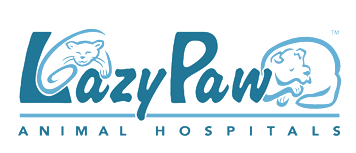The options for treating a dog with hip dysplasia are much more effective than those used even a few years ago. There are several breeds that are much more prone to hip dysplasia than others but generally the large to giant breeds are at greatest risk. It is considered to be caused by a combination of factors including genetic problems with hip laxity, incorrect diet, trauma, obesity and over exertion of the dog while in the rapid growth stage of development.
Hip dysplasia is caused by a malformation of the hip joint combined with poor support of the joint by the surrounding muscles and connective tissue. Since the hip joint is not properly formed, as the dog moves the hind legs the bone grates on bone, creating more damage to the surface both the femur and the socket of the pelvis. This in turn creates inflammation of the joint along with ever increasing pain and discomfort with any type of weight bearing action.
Dogs with hip dysplasia tend to have difficulty rising from a sitting and standing position, as well as a strained gait while walking or running. They tend to move both hind legs together to relieve the stress on the affected hip, creating a hopping action with the back quarters. The dog also tends to stand with the back feet very close together and not squared to the rest of the body. Activity levels will decrease and the dog may experience pain when touched on the lower back and over the hip area. The back leg or legs may be carried very straight and they do not move naturally rather appear very stiff. Obese dogs will have greater difficulty in moving about with hip dysplasia due to the additional weight on the hips, so weight reduction is key in management of this condition.
In severe cases, a surgical procedure can be used to reconstruct the joint or tighten the supportive tissue around the joint. New work on hip replacements in dogs has been very successful for dogs but this is a costly procedure with a long recovery period. In some dogs the actual hip ball joint can be removed and the muscles will compensate to allow movement to the leg. With the joint removed the pain literally is eliminated allowing the dog to live in comfort.
For some dogs weight loss, special diets, and physical therapy on the hip can work wonders. Hydrotherapy or working out in water is a great way to exercise the hip without adding any weight. Joint health supplements such as Dasuquin, are very rewarding but not generally enough to manage discomfort. Medications to control the pain and reduce the inflammation occurring in the damaged joint are often a good combination for an older dog. Routine, non strenuous exercise such as walks are a great way to help keep your dog’s weight down and also continue to maintain mobility in the joint. Ramps and stairs in the home to eliminate any need for the dog to jump up and down can really help in reducing stress on the hips and minimize any pain for your pet.
